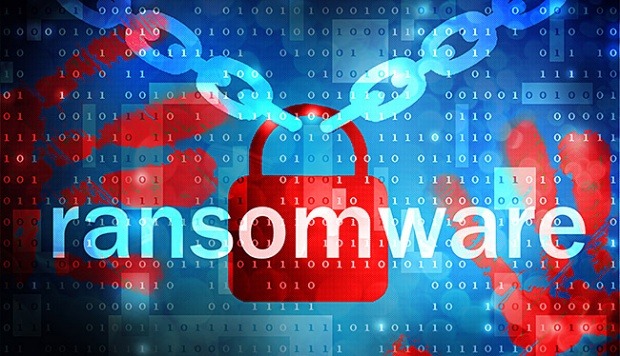Ransomware Attacks PDN, ITS Expert Emphasizes the Importance of Cybersecurity

Illustration of a ransomware cyber attack targeting the National Data Center (source: shutterstock.com)
ITS Campus, ITS News — Challenges arising from technological advancements, ransomware is increasingly evolving and posing significant dangers by targeting victims on a large scale. This was recently evident at the National Data Center (PDN), which suffered a cyberattack involving ransomware, disrupting several critical government services, including immigration services.
Ridho Rahman Hariadi, SKom, MSc, a cybersecurity expert from the Smart City and Cyber Security Laboratory at the Institut Teknologi Sepuluh Nopember (ITS), explains that ransomware is malicious software designed to encrypt data within systems or devices, preventing owners from accessing their data.
Once data is encrypted successfully, attackers display a ransom message demanding payment in cryptocurrency such as Bitcoin. “This ransom is seen as compensation for restoring access to the encrypted data,” Ridho clarifies.
Addressing the ransomware incident at PDN, Ridho emphasizes that such attacks not only threaten large institutions but also have significant impacts on the general public. These threats include potential loss of personal data such as photos, documents, and financial information infected by ransomware. Moreover, attackers may steal sensitive data and threaten to publish or sell it if the ransom is not paid, leading to high-risk data breaches of personal information.

Ridho Rahman Hariadi, SKom, MSc, cybersecurity expert from the Laboratory of Smart City and Cyber Security ITSga
Due to data breaches, Ridho mentions that perpetrators can also exploit social media accounts, bank accounts, and other personal accounts for financial gain. Moreover, ransomware attacks on critical infrastructure can disrupt essential services such as healthcare and transportation, potentially causing inconvenience and endangering the public, added the ITS Information Technology Department lecturer.
Taking action is crucial, Ridho emphasizes the importance of mitigation measures to prevent individual attacks on the community. First and foremost, it is essential for every organization and individual to regularly back up data and store it in separate locations. Regular software updates are also crucial to close security gaps that ransomware, phishing, and other cyberattacks can exploit.
Furthermore, Ridho highlights the critical role of educational institutions, especially campuses, in raising awareness and enhancing cybersecurity skills. Other preventive measures include educating the public and employees on good cybersecurity practices, using security software to detect and block ransomware, and isolating infected networks to prevent further spread.
Ridho also suggests that the government strengthen cooperation with educational institutions and research organizations to develop more advanced technological solutions for detecting and handling cyberattacks. “Campuses like ITS have a significant responsibility in educating the younger generation about the importance of cybersecurity. Through training programs, seminars, and research, we can enhance national cybersecurity resilience,” he states.
Through these initiatives, it is hoped that incidents of ransomware attacks can be minimized, and national cybersecurity resilience can be enhanced to protect critical data and public services crucial to society. “Awareness of the importance of cybersecurity must continue to be heightened, both within government, the private sector, and the general public, to ensure that critical data and systems remain protected from evolving threats,” Ridho emphasizes. (ITS Public Relations)
Reporter: Lathifah Sahda
Related News
-
Faithful in Times of Joy and Sorrow, Married Couple Graduate with Doctorates Together at ITS
ITS Campus, ITS News — As though guided by one heart and one soul, Dr Hanugra Aulia Sidharta ST
June 30, 2024 23:06 -
ITS Wins 2024 Project Implementation Award for Commitment to Gender Implementation
ITS Campus, ITS News —Not only technology-oriented, Institut Teknologi Sepuluh Nopember (ITS) also show its commitment to support gender
June 30, 2024 23:06 -
ITS Professor Researched the Role of Human Integration in Sustainable Architecture
ITS Campus, ITS News –The developing era has an impact on many aspects of life, including in the field
June 30, 2024 23:06 -
ITS Sends Off Group for Joint Homecoming to 64 Destination Areas
ITS Campus, ITS News — Approaching Eid al-Fitr, the Sepuluh Nopember Institute of Technology (ITS) is once again facilitating academics who want
June 30, 2024 23:06
